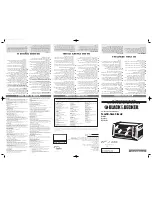
60
11
Start-up
Installation & Operation Manual
Condensate drain
1. This boiler is a high efficiency appliance that produces
condensate.
2. The provided condensate trap is equipped with a ball
that acts as a seal against harmful flue gases escaping in
case there is no condensate in the trap. If this ball is not
present, flue gases may be able to pass through the trap
when there is no condensate present, resulting in an
unsafe environment. It is important to check and make
sure the ball is located in the trap, acting as a seal against
flue gases.
3. Connect the condensate trap to the condensate hoses
located on the back of the unit hear the bottom. Use
the hose clamps to secure the connection. Connect the
two-pin molex provided with the condensate trap to the
mating connector on the rear of the boiler.
4. Slope condensate tubing down and away from the boiler
into a drain or condensate neutralizing filter. Condensate
from the Knight XL boiler will be slightly acidic (typically
with a pH from 3 to 5). Install a neutralizing filter if
required by local codes.
A Neutralizer Kit is available from the factory.
5. Do not expose condensate line to freezing temperatures.
6. Use only plastic tubing or piping as a condensate drain
line (FIG. 11-1).
7. A condensate removal pump is required if the boiler is
below the drain. When installing a condensate pump,
select one approved for use with condensing boilers and
furnaces. The pump should have an overflow switch to
prevent property damage from condensate spillage. The
switch should be wired in series with the air pressure
switch inside the boiler.
Use materials approved by the authority
having jurisdiction. In the absence of other
authority, PVC and CPVC pipe must comply
with ASTM D1785 or D2845. Cement and
primer must comply with ASME D2564 or
F493. For Canada use CSA or ULC certified
PVC or CPVC pipe, fittings, and cement.
NOTICE
NOTICE
To allow for proper drainage on large
horizontal runs, a second line vent may
be required and tubing size may need to
increase to 1 inch.
The condensate line must remain
unobstructed, allowing free flow of
condensate. If condensate is allowed to
freeze in the line or if the line is obstructed in
any other manner, condensate can exit from
the condensate trap vent opening, resulting
in potential water damage to property.
The condensate trap must have the float ball
(FIG. 11-1) in place during all times of boiler
operation to avoid flue gas emission from
the condensate drain line. Failure to ensure
the float ball is in place could result in severe
personal injury or death.
⚠
WARNING
Figure 11-1
Condensate Trap
FRONT VIEW
REAR VIEW
DIR #2000507911 00
TO FLOOR DRAIN
OR NEUTRALIZER KIT
1/2” PVC / CPVC CONNECTION
FROM CONDENSATE
VENT ON APPLIANCE
FROM CONDENSATE
DRAIN ON APPLIANCE
















































